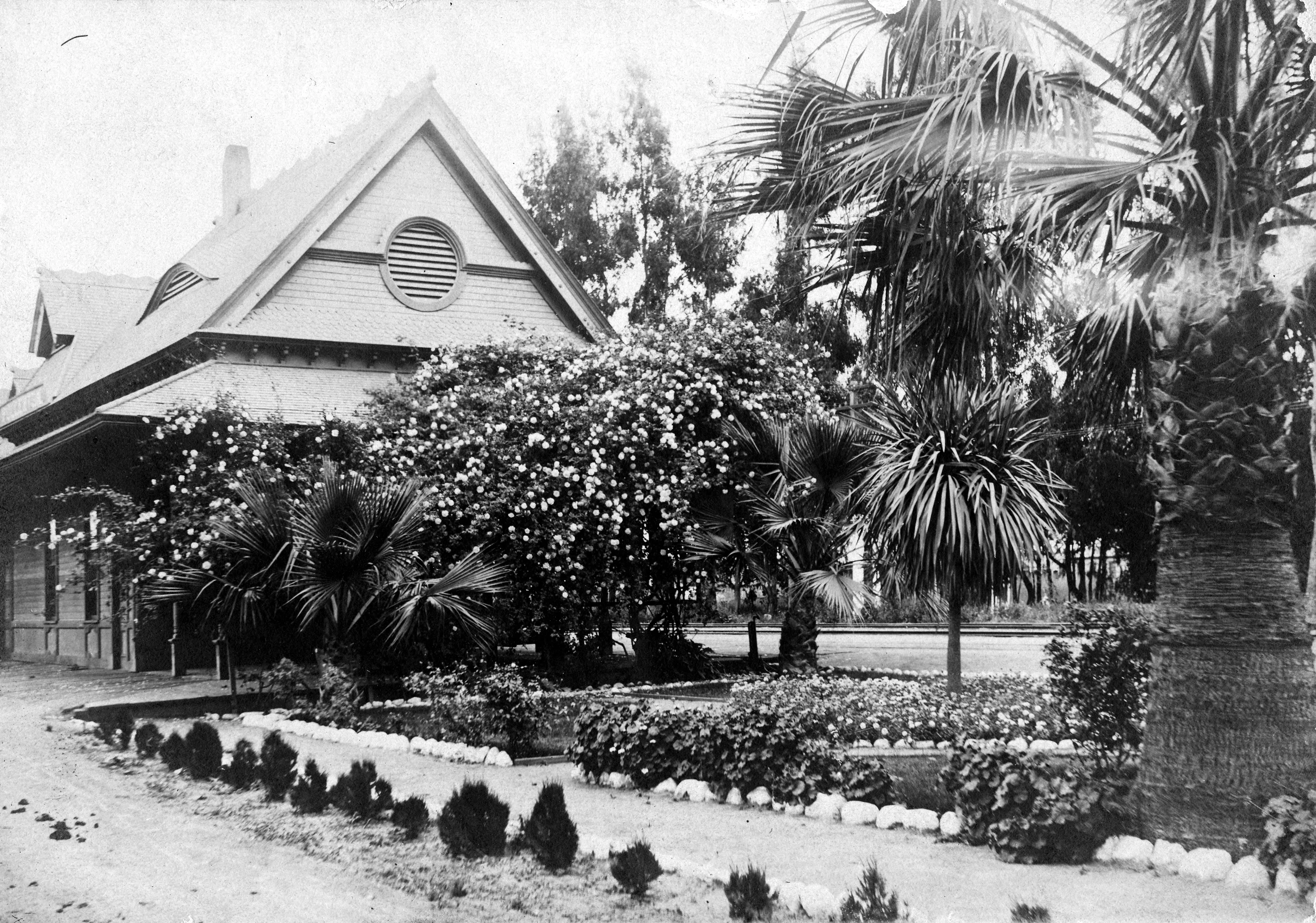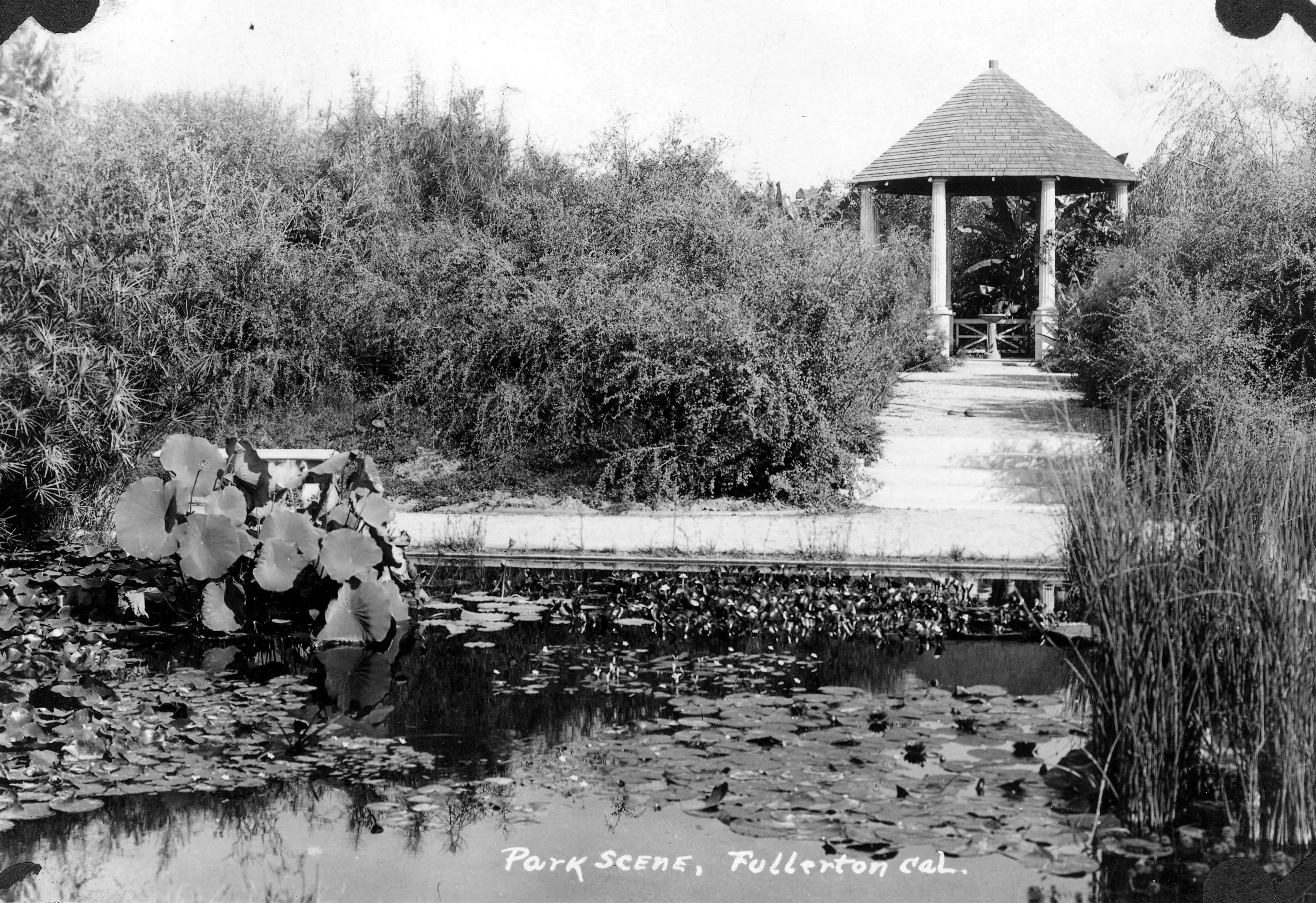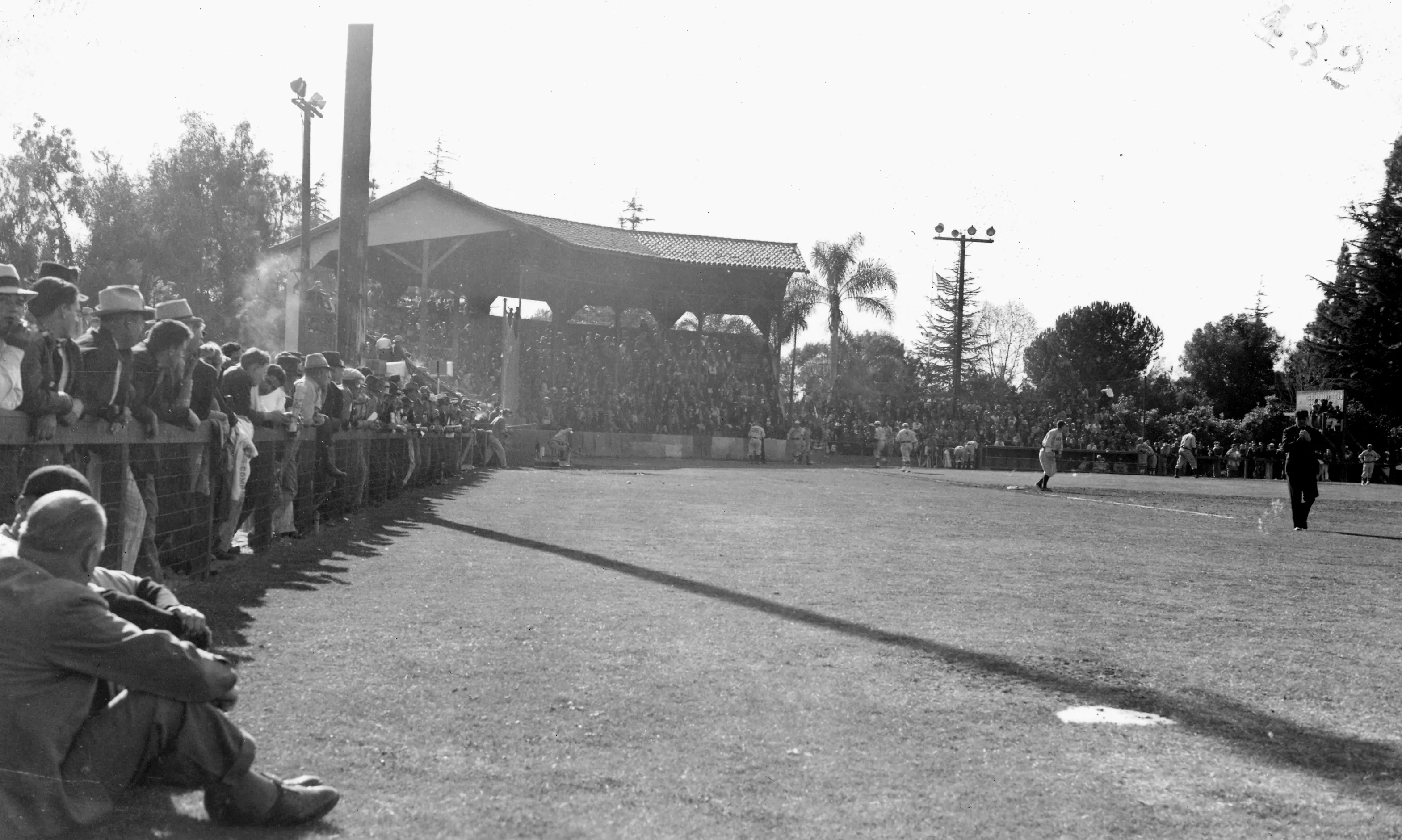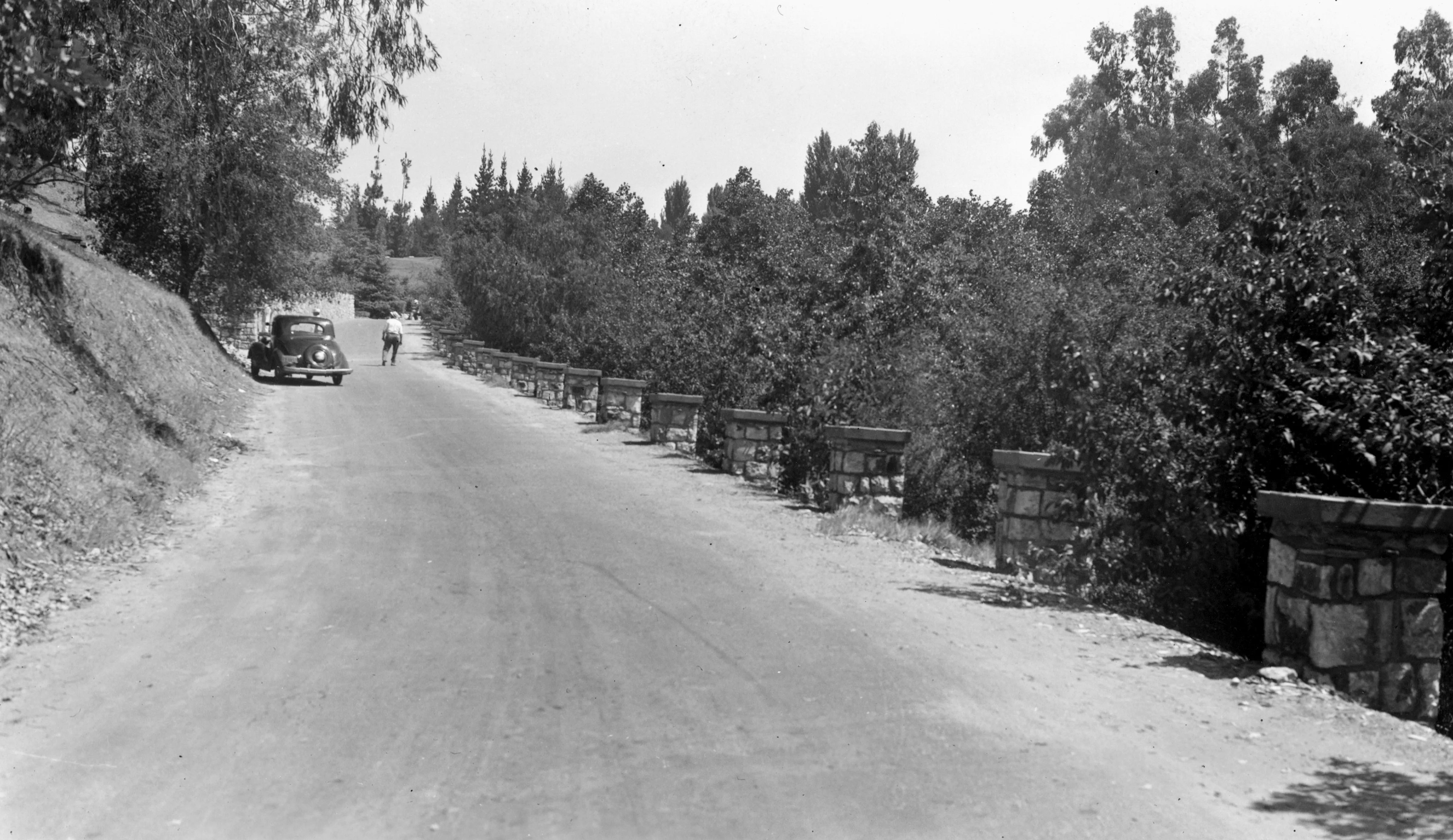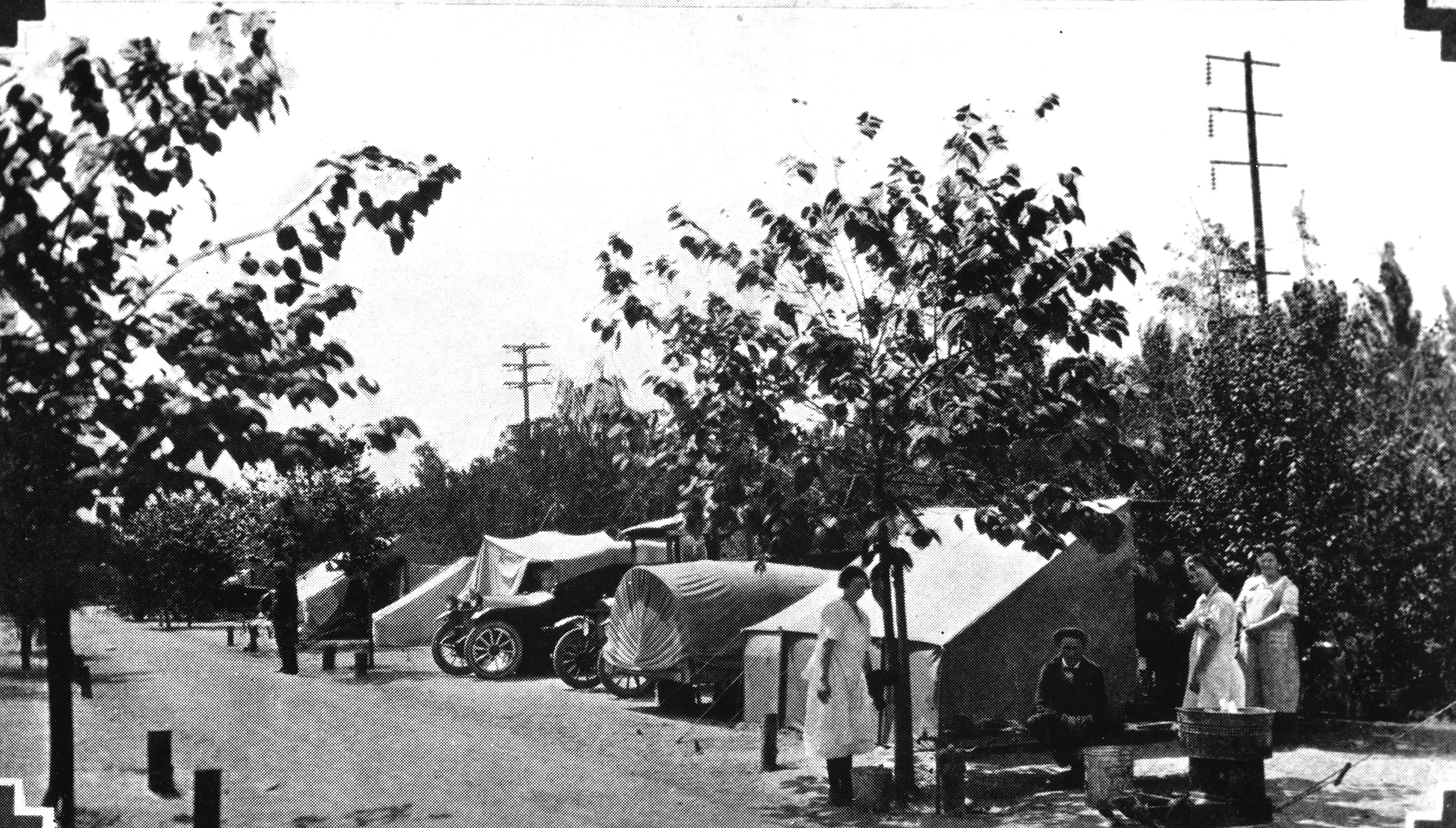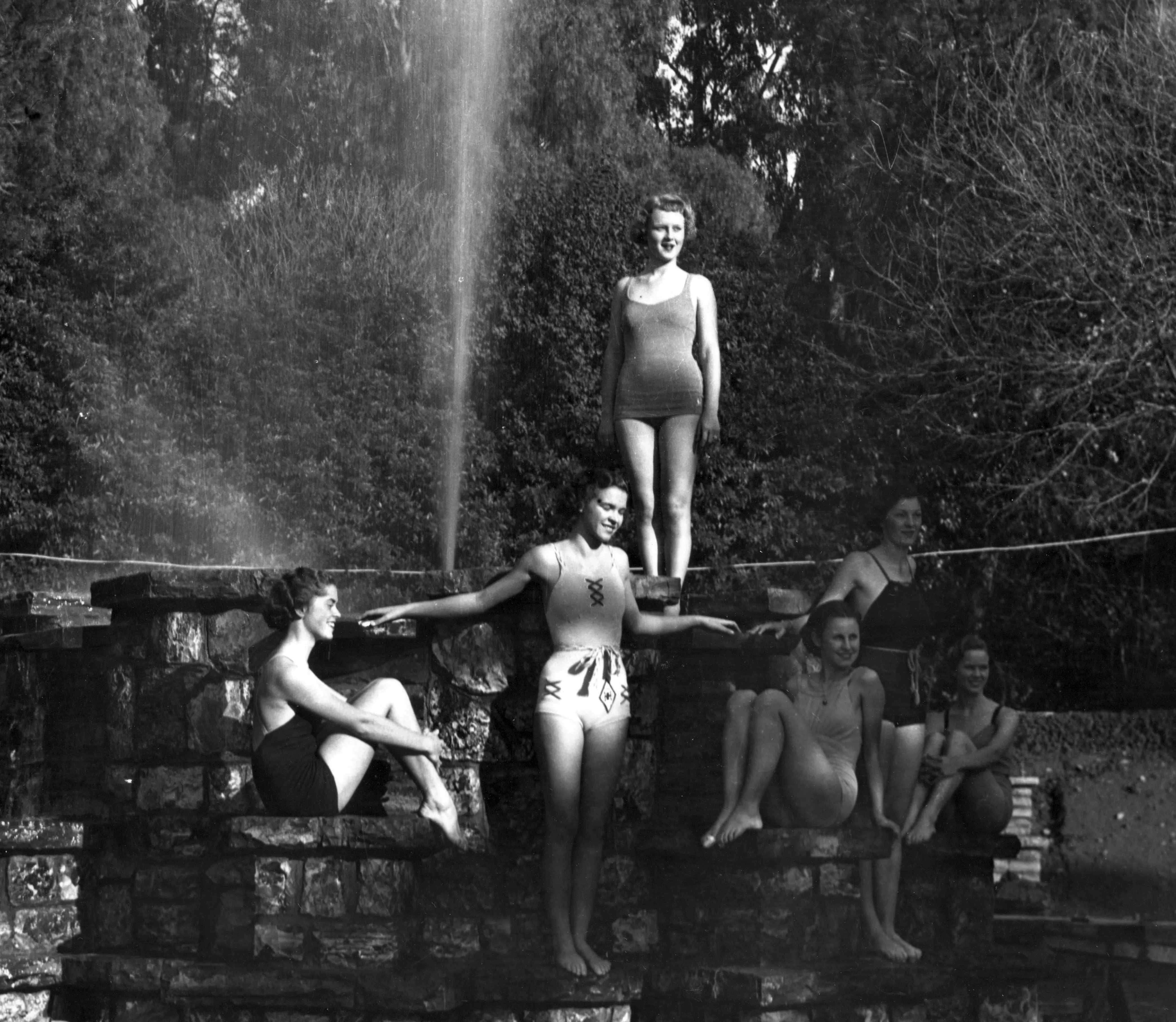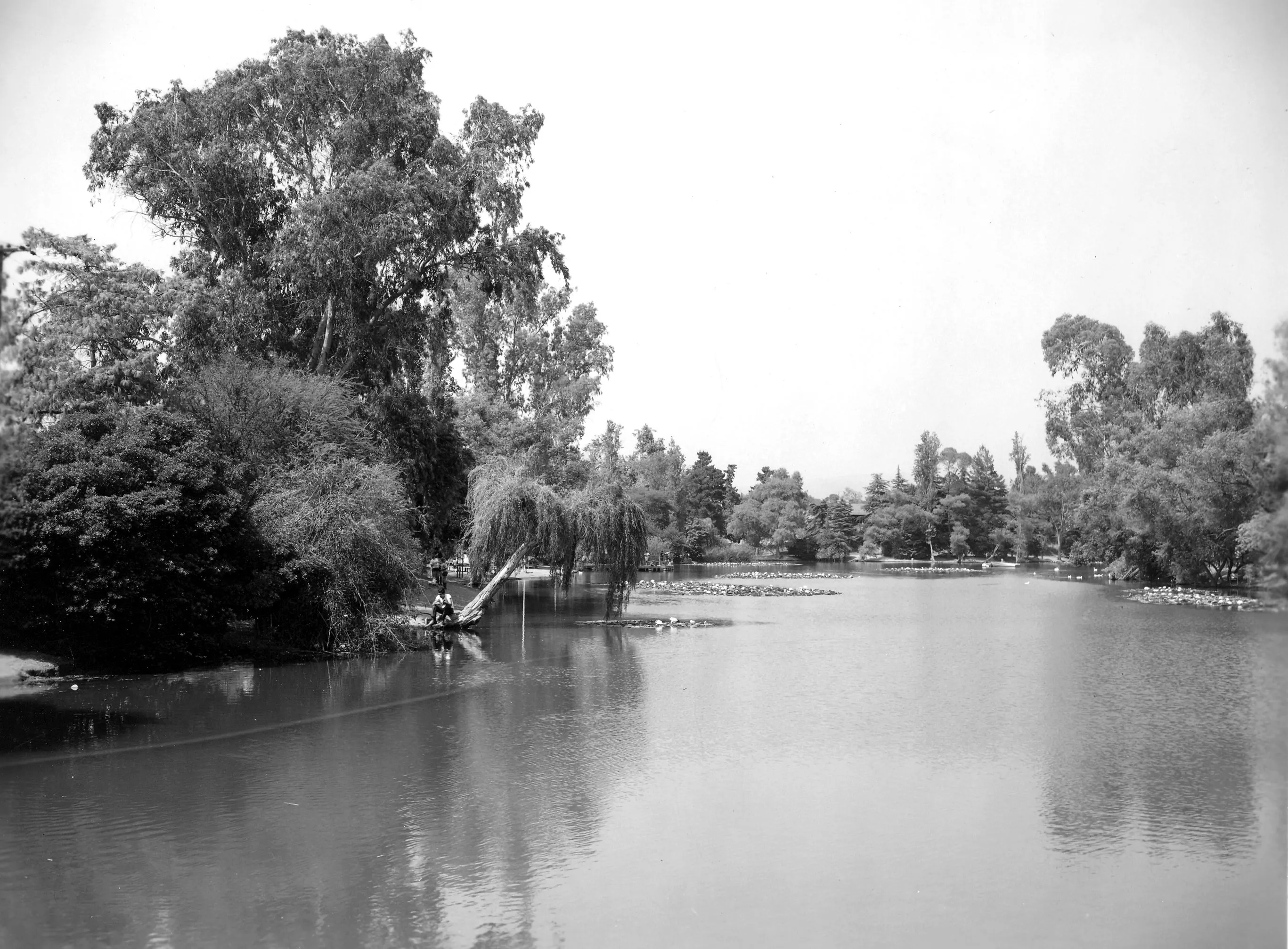SANTA FE PARK
In October 1904, Fullerton city trustees contacted the Santa Fe Railroad about establishing the city’s first park. The railroad funded the land and gardener, Fullerton provided the plant materials, and the Santa Fe Park was born. The Santa Fe Depot, shown on the left, was built in 1888 and demolished in 1929 to make way for the Spanish Colonial Revival depot that stands today.
SANTA FE PARK
When the park opened, it quickly became the outdoor meeting place and hangout for locals, including these dandies. Fullerton did not have a park commission until 1914, so in May 1908 the city marshal was instructed to oversee the park and its visitors at no extra cost to the city. Santa Fe Park was located at the corner of Santa Fe and Spadra (Harbor) Road.
COMMONWEALTH PARK
When Fullerton High School burned down in November 1910, a movement began to obtain the site for a park, and in 1913 Commonwealth Park was established as Fullerton’s first city-owned park. When the park opened to the public, its beautiful natural scenery rivaled any park in Orange and Los Angeles Counties. The park was designed by Johann George Seupelt, Fullerton’s first park commissioner.
COMMONWEALTH PARK
The park was immediately popular with Fullerton residents, who flocked to the park as soon as it was landscaped. In addition to lush plantings, the park featured a wading pool, gazebos, benches scattered along walkways, and swings with monkey bars for children.
AMERIGE PARK
Additional acreage was added to Amerige Park, and this dirt field served as a ball field for countless players. In 1934, Fullerton used WPA funds to greatly improve the field, which soon became a training site for farm and semi-professional teams and exhibition games that featured such Hall of Famers as Joe DiMaggio, Satchel Paige, and Honus Wagner.
HILLCREST PARK
Constructed on 35.6 acres, Hillcrest Park is the City of Fullerton’s largest, most beautiful, and historically significant park. Centrally located in Fullerton on land purchased in 1920, the park has retained its character while a bustling city has grown and developed around it. In 1980, Hillcrest Park was designated Local Historic Landmark Number 6.
HILLCREST PARK
One of the park’s most distinctive features is the flagstone that runs throughout the parkland. The unique stone of varying sizes is used to pave and decorate walkways, stairs, benches, lawn and plant borders, walls, curbs, columns, pilasters, stoves, tables, barbeque pits, fountains, and bridges.
HILLCREST PARK
Positioned atop the hill, providing a spectacular 180-degree view, sits the rustic Izaak Walton Cabin. Fullerton’s only cabin, it was constructed of discarded telegraph poles in 1931 at a cost of $165. A fire on December 24, 1990, destroyed the original cabin, but it was rebuilt in 1996 by Sierra Log Homes at the cost of $145,000, using the plans from the original structure.
HILLCREST PARK
The Hillcrest Park scenic driveway was paved by Works Projects Administration (WPA) workers and decorated with flagstone pilasters. The original roads were originally laid out in 1023 using a mule team, a plow, and a Fresno scraper.
HILLCREST PARK
Located on the southwest corner of Valley View and Harbor, the Fullerton Municipal Auto Camp was the first area of Hillcrest Park to be developed. The auto camp, which had water, gas, and electric lights, opened in October 1920. The camp was replaced in 1936 by the fountain and great lawn built by the Depression-era WPA workers.
HILLCREST PARK
The polychromatic electric fountain was constructed in 1936 by WPA laborers at a cost of $20,000. When the fountain was originally built, a central jet shot water 28 feet into the air, and a ring of 65 jets around the outside provided different spray combinations. Twenty-two projectors of green, blue and amber set below the surface illuminated the water. Every six minutes the fountain went through 62 color, light, and water changes.
LAGUNA LAKE PARK
Laguna Lake - once known as Bastanchury Lake because it was used as an irrigation reservoir for the Bastanchury Ranch – was developed and expanded into the city’s second largest park in the late 1950s. A small boat landing was added for young fishermen and the man-made lake was stocked with bass, bluegill, and crappie donated by longtime Fullerton resident C. Stanley Chapman.

